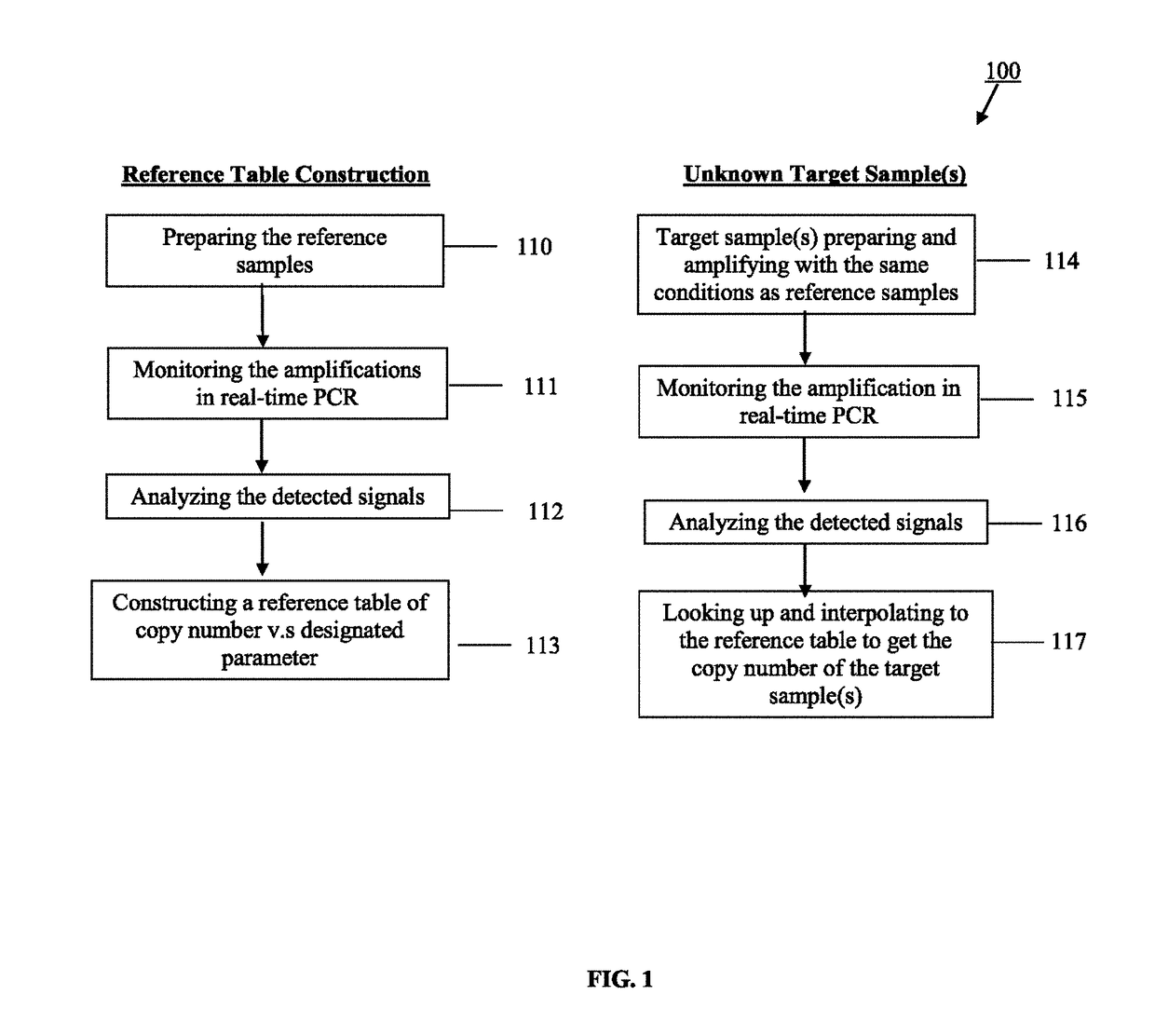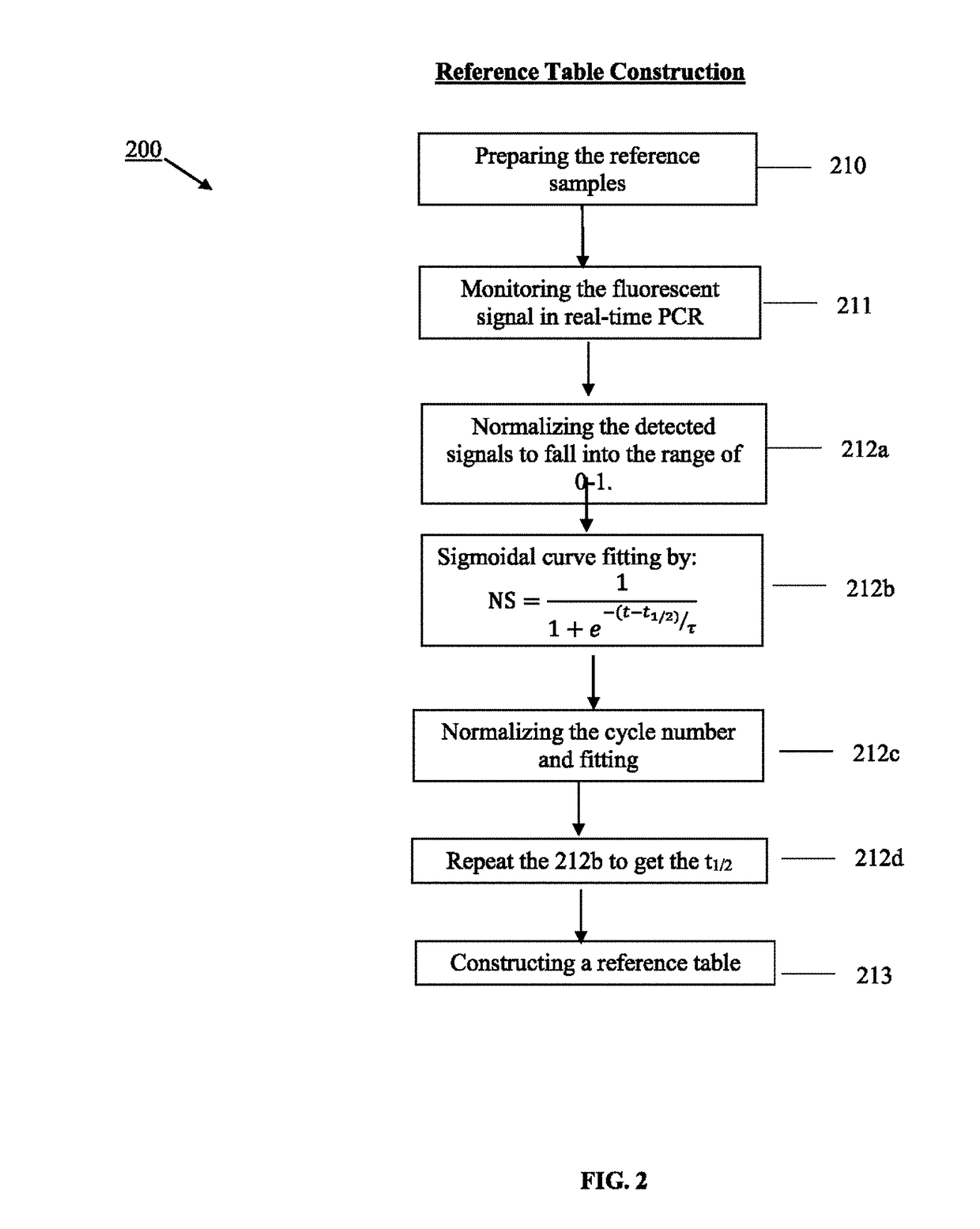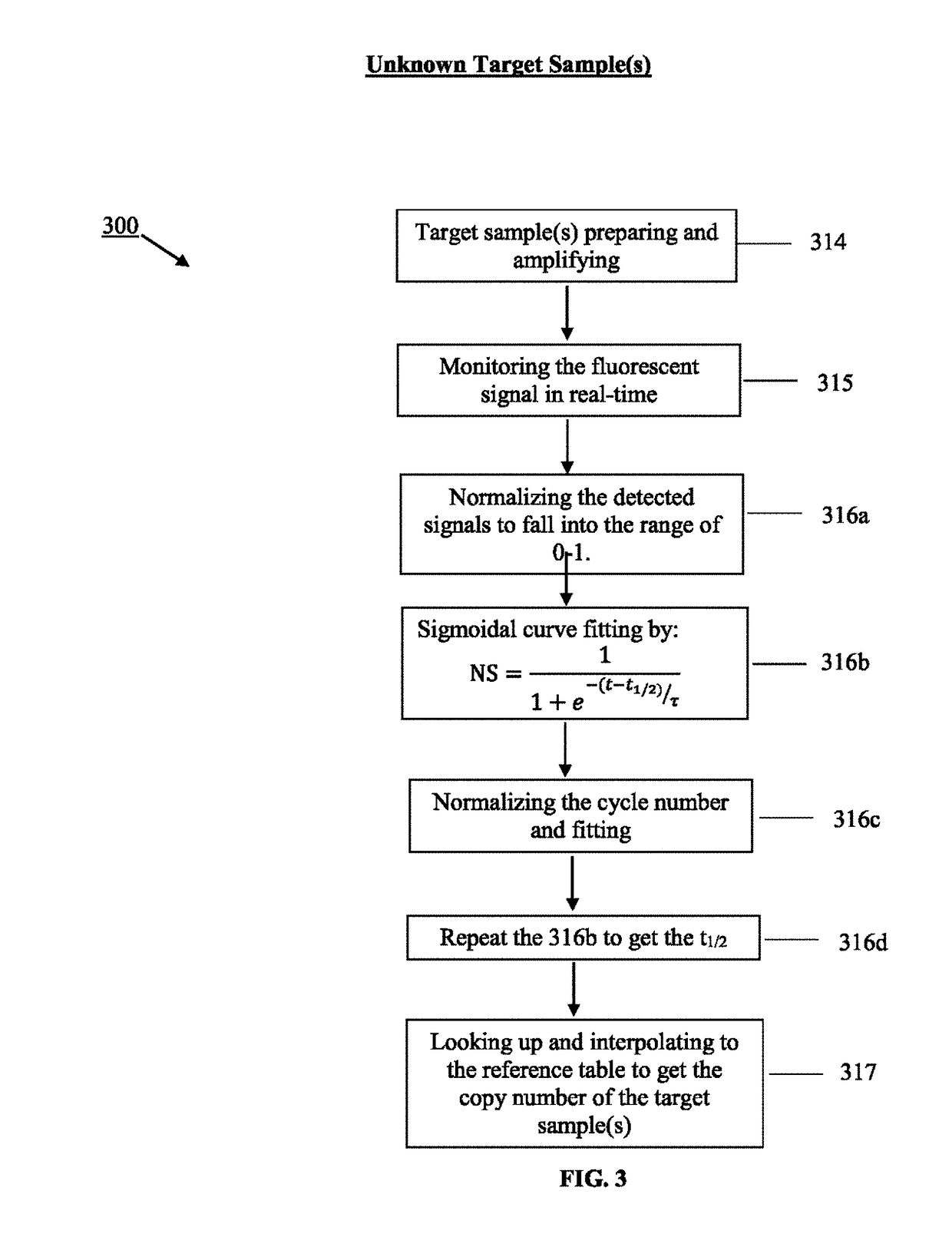Method for real-time quantification of nucleic acid
a nucleic acid and real-time technology, applied in the field of nucleic acid quantification, can solve the problems of huge amount of reagents to use, drawbacks and limitations of the said method, and increase costs, and achieve the effect of constant amplification efficiency
- Summary
- Abstract
- Description
- Claims
- Application Information
AI Technical Summary
Benefits of technology
Problems solved by technology
Method used
Image
Examples
example 1
Calibration of Different Primer Concentration
[0045]Step A. Amplification of UCP1 gDNAs 210 (Reference Samples)
[0046]The gDNA was isolated from whole blood using a QIAamp® DNA BLOOD Mini Kit (QIAGEN N.V.). The gDNA concentration was adjusted to 10 ng / μl (hereinafter, reference samples).
[0047]Primers having SEQ ID NO:1 and SEQ ID NO:2 were used to amplified a UCP1 sequence. The primer sequences are shown in Table 1. Two serial single dilutions were prepared from 0.4 μM with primer concentrations of 0.2 μM and 0.1 μM. As shown on Table 2, for each amount of the primer, the experiment was performed duplicate.
TABLE 1Primer SequencePrimers used in the examplesSequenceIDFunctionSequence 5′-3′SEQ IDForward primer ofCAGTTAAGAGCCTTTGCCAGNo: 1UCP1SEQ IDReverse primer ofTCCTTGGAATCCAGAACTACNo: 2UCP1
[0048]The amplification reaction was carried out which was measured and monitored in real-time in the Evagreen® dye on a BioRad CFX Connect Real-time System (BioRad Laboratories, Inc.). Each reaction...
example 2
Calibration of Different dNTP Concentration
[0054]Step A. Amplification of UCP1 gDNAs 210 (Reference Samples)
[0055]The conditions and the processes of gDNA extraction and amplification are identical with Example 1 as listed in Table 5 except: a. two serial single dilutions were prepared from 0.4 mM with dNTP concentrations of 0.2 mM and 0.1 mM, b. the primer concentration is 0.4 μM.
TABLE 5Conditions of the Amplification of the reference samplesCondition 4Condition 5Condition 6No. 7 & 8No. 9 & 10No. 11 & 12DNAgDNA 10 ngtemplatePrimerUCP1-F1, UCP1-B1primer0.4 μMdNTP0.4 mM0.2 mM0.1 mMEvaGreen ®0.25XPolymerase1.25 unitMgCl23.5 mMTotal25 μlVolume
Step B. Data Analysis
[0056]As shown in FIG. 8A-8D, analyzing the detected signals with the same processing step as Example 1, the obtained t1 / 2 are only related to the copy number, and the t1 / 2 of each reference samples are not changed by different dNTP concentrations. The detected signals are shown in FIG. 8A. FIG. 8B illustrates the background v...
example 3
Reference Table Construction
[0057]Three different concentration templates are used in EXAMPLE 3 to construct a reference table of copy number vs. t1 / 2.
Step A. Amplification of UCP1 gDNAs 210 (Reference Samples)
[0058]The gDNA was isolated from whole blood using a QIAamp® DNA BLOOD Mini Kit (QIAGEN N.V.). The gDNA concentration was adjusted to 10 ng / μl. Two serial single dilutions were prepared from this with gDNA concentration of 2.5 ng / μ1, and 0.625 ng / μ1.
[0059]Primers having SEQ ID NO: 1 and SEQ ID NO: 2 were used to amplified a UCP1 sequence. The primer sequences are already listed in Table 1. As shown in Table 6, for each amount of the gDNA, the experiment was performed duplicate. The amplification reaction was carried out which was measured and monitored in real-time in the Evagreen® dye on a BioRad CFX Connect Real-time System (BioRad Laboratories, Inc.). Each reaction mixture volume was 25 μl, and was amplified under the following conditions:
TABLE 6Conditions of the Amplificat...
PUM
| Property | Measurement | Unit |
|---|---|---|
| Temperature | aaaaa | aaaaa |
| Temperature | aaaaa | aaaaa |
| Temperature | aaaaa | aaaaa |
Abstract
Description
Claims
Application Information
 Login to View More
Login to View More - R&D
- Intellectual Property
- Life Sciences
- Materials
- Tech Scout
- Unparalleled Data Quality
- Higher Quality Content
- 60% Fewer Hallucinations
Browse by: Latest US Patents, China's latest patents, Technical Efficacy Thesaurus, Application Domain, Technology Topic, Popular Technical Reports.
© 2025 PatSnap. All rights reserved.Legal|Privacy policy|Modern Slavery Act Transparency Statement|Sitemap|About US| Contact US: help@patsnap.com



